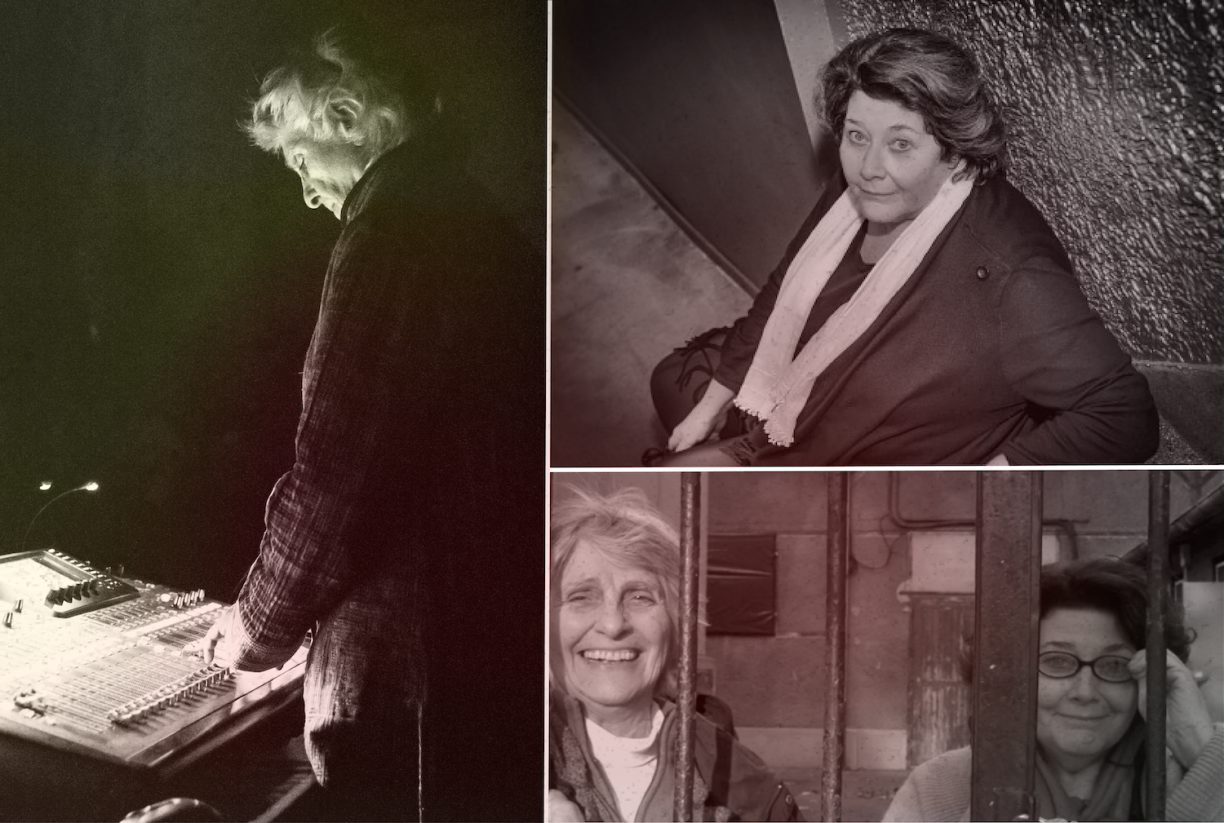Christine Groult
ISSUE welcomes pioneering French composers Beatriz Ferreyra & Christine Groult, presenting new solo and collaborative work. In 2018, ISSUE was thrilled to present Ferreyra’s debut U.S. performance; and, a performance of Groult’s work by Dominique Deyris followed in early 2019. The occasion marks Groult’s own debut U.S. performance, and an exceptionally rare opportunity to hear the work of two major figures in the development of musique concrète, electroacoustic, and acousmatic music. At ISSUE, the duo perform solo improvisations and individually diffuse recent collaborative work in a multi-channel speaker arrangement.
Beatriz Ferreyra began her composing career incidentally, having been exposed to the musical methods of Pierre Schaeffer, originator of musique concrète and acousmatic music, and the Groupe de Recherches Musicales, shortly after moving from her native Argentina to Paris in the 1960s. Ferreyra’s passion for unusual sounds jump-started an education that led to the creation of her own entrancing electroacoustic works, as well as collaborations with alternative instrument inventors like Bernard Baschet and assisting roles in the realization of compositions by Schaeffer himself. Christine Groult is also one of the few female composers of her generation who studied and worked with Schaeffer. A composer of music for radio, theater, choreography and documentaries, Groult’s work searches for poetic and expressive possibilities that allow for the development of musical “scenographies,” a self-invented concept that attempts to establish new imaginary spaces through acoustic transmission.
Frequent collaborators, Ferreyra and Groult have worked together on multiple performances and releases including Nahash, released in 2015 on the Parisian label trAce. Commissioned in 2011 by former of INA-GRM artistic director Christian Zanesi, the recording is a live improvised duet presented at La Gaîté Lyrique in Paris. Ferreyra utilized her 70’s analog studio with four Revox tape recorders, augmented with an analog matrix and a synchronizer box with self-designed variable speed drives. Ferreyra describes the use of the magnetic tape as “very physical, it puts the movement of the body into a direct relationship with the sound that is shaped.” Christine Groult worked with digital samplers and tested current cheap interfaces (several keyboards, two pads, faders, knobs, and touch pads). Groult describes the use of the sampler, an essential tool of the 90’s, as “very particular and playful [but] tends to be abandoned. It allows the free use of recorded sound in a singular and personal way.” The interaction between these two very different technologies appealed to the two composers and stimulated them, forming a unique focus on their expressive and poetic potential.
Born in 1937 in Cordoba, Argentina, Beatriz Ferreyra became a student of music in her early years, playing piano in Buenos Aires before moving to Paris to pursue a career as a painter. She instead joined the Groupe de Recherches Musicales (GRM) “with no qualification except her ears.” Regardless, much of her musical work since has been in academia: She’s worked in research departments, lectured at conservatories and held residencies in electronic music at Dartmouth College. Profoundly affected by the disorienting musical methods of Pierre Schaeffer and the GRM – for some time, Ferreyra was the only female composer working with Schaeffer – and contemporaries such as Bernard Parmeggiani, Edgardo Canton and Bruno Maderna. Her sonic palette has expanded dramatically over the decades, while remaining just as experimental as in the early days of cutting tape. In addition to her work for institutions like GRM in Paris and GMEB in Bourges, Ferreyra has composed original music for dance performances, film soundtracks and exercises that relate to therapy and collective experience. Ferreyra has remained active in the five decades since her initial experiments, including work at the Institute for Electroacoustic Music in Bourges and in the field of music therapy, but official releases of her music have been few and far between. In 2015, her album GRM Works was released via Recollection GRM in collaboration with the Viennese label Editions Mego.
Christine Groult has studied at the GRM (directed Pierre Schaeffer), at the Experimental Conservatory of Pantin (directed by Michel Decoust), and at the Sorbonne in the department of musicology. From 1976 to 1986, she was an assistant in the department of pedagogy at Institute for Research and Coordination in Acoustics/Music under the direction of Pierre Boulez. From 1985 to 1990 she was responsible for the electroacoustical studio of the National Music School in Chalon-sur-Saône. In 1989, she passed her CA (Certificat d’Aptitude) in electroacoustical music. Since 1990 she has taught electroacoustic composition at the National Music School of Pantin. In 2002, she founded the association “Music in situ,” the mission of which is the proposition of “scenographies.” Her works include La condition captive (2003); Canal instantané (2004) composed with Marco Marini; Si je les écoutais... (2007), premiered at Radio France during Multiphonies Festival; Nahash et Duo (2011-2014) composed with Beatriz Ferreyra, commission of Ina-Grm, premiered at Gaîté lyrique (2011), at Dynamo (2013) and at 104 in Paris (2014); À la pointe de l'instant (2016), commissioned by the festival Turbulences sonores of Montpellier.
Videography by Yiyang Cao. Audio recorded by Bob Bellerue. Edited by James Emrick.

